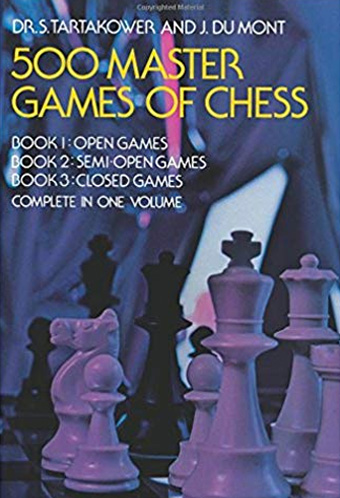As its title implies, the book is a compilation of 500 master games played by the greatest chess players in the world. Said to be the ‘greatest standard collection’ of chess games, Savielly Tartakower’s book covers games played by master players such as Jose Raul Capablanca, Alexander Alekhine, Emanuel Lasker, Siegbert Tarrasch, Max Euwe, Akiba Rubenstein, and Tartakower himself.
The book’s game coverage spans 150 years of chess history including historic once in a lifetime matches such as that of R. Franz and Karl Mayer in 1858 and Thomas Bowdler and Henry Seymour Conway in 1788. The compilation is fully annotated and was written to serve as a study companion for intermediate to advanced chess players.
What’s great about the book is that it is written well making the serious and highly technical topic enjoyable as a learning tool. It helps that the author was both a master chess player and gifted writer himself.
Readers like the compilation because it humanizes the game. Instead of being treated to just patterns, strategies and tactics, readers are made to remember that chess, at the end of the day, is a game played humans and not machines. As one reader put it, it made him realize that ‘chess has personality’.
Competitive chess players would benefit the most from reading this book by Tartakower. It offers great insight and analyses on how earlier masters handled certain combinations which is helpful for any student wanting to improve their technique.
One downside of the book though is that it uses descriptive notation instead of algebraic notation which is the standard today. Readers will need to spend some time (probably an extra 15 to 2 minutes) learning descriptive notation before being able to dive into the book fully. Fortunately, learning descriptive notation would also open some doors for you if you plan on reading other classic chess books.
About the Author
Savielly Tartakower was a Polish-French chess grandmaster and chess writer who remain influential today because of his books and reputation as a player.
Among the many books and brochures about chess that he wrote, the most popular is The Hypermodern Game of Chess which was published in 1924. He is also credited as one of te founders of the Hypermodern School of Chess.
Tartakower participated and won various chess tournaments around Europe during the peak of his career. Some of the most notable ones are his wins at the Polish Chess Championship and the Chess Olympiad.
